LPN Classes, Courses, and Curriculum

An Introduction to Nursing and the Role of the Licensed Practical Nurse
This course will give you information about the background of nursing, the duties of the licensed practical nurse (LPN) in today’s healthcare team, the environments where LPNs provide nursing care, the elements of the nursing process, critical thinking, the therapeutic relationship between nurse and patient, and communication with patients, family, and the healthcare team.
1. The evolution and history of nursing from early civilization and Florence Nightingale to the current day
2. The nursing process, encompassing assessment, diagnosis, planning, implementation, and evaluation
3. Applying critical thinking skills to the nursing process and patient care
4. Therapeutic verbal and non-verbal communication techniques
5. Factors influencing the communication process
6. Overcoming barriers to therapeutic communication
7. The LPN scope of practice, roles, and responsibilities
8. The roles and responsibilities of other members of the interdisciplinary healthcare team
9. Settings of care

Struggling to meet your deadline?
Get your assignment on LPN Classes, Courses, and Curriculum done by certified MDs and PhDs in the USA. ORDER NOW!
Legal, ethical, cultural, and ethnic aspects of nursing
In this course, you will understand the legal system, laws, ethical principles, and practices guiding nursing care. You will also explore cultural and ethnic factors affecting patients and how LPNs adjust care based on these considerations.
1. The American Nurses’ Association Code of Ethics
2. Assessing cultural and ethnic needs of patients
3. Professional liability insurance
4. Malpractice and negligence
5. Applying the nursing process to legal, ethical, cultural, and ethnic aspects of care
6. Patient privacy and confidentiality
7. Abuse and neglect of children, elders, and spouses
8. The role of state boards of nursing
9. Nursing care standards and state nurse practice acts
10. Ethical principles and dilemmas
11. Adapting and providing culturally and ethnically sensitive care
12. Common ethical and bioethical issues in healthcare
13. Diversity, transcultural nursing, and cultural competence
Anatomy and Physiology
LPNs need knowledge about the human body and its functions to provide quality nursing care. This course covers medical terminology, anatomical and physiological terms, and the normal functioning of cells, tissues, membranes, organs, and bodily systems.
- Terms related to anatomy and physiology
- Functions and structures of cells
- Tissues: Structures, functions, and types
- Membranes: Structures, functions, and types
- Organs and systems: Structures, functions, and examples
- Assessment: The Health History and Physical Examination
Assessments: The Health History and the Physical Examination
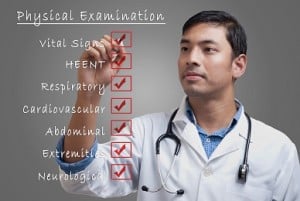 Assessment is the initial stage of the nursing process, allowing LPNs to identify patient healthcare needs in collaboration with registered nurses. A comprehensive, timely, and accurate assessment is crucial for planning and implementing nursing care. The health history section includes data on the patient’s past and current medical history, while the physical assessment involves a thorough examination of the patient and their functioning.
Assessment is the initial stage of the nursing process, allowing LPNs to identify patient healthcare needs in collaboration with registered nurses. A comprehensive, timely, and accurate assessment is crucial for planning and implementing nursing care. The health history section includes data on the patient’s past and current medical history, while the physical assessment involves a thorough examination of the patient and their functioning.
1. Categories of data
2. Data collection methods
3. Conducting the health history interview
4. Components of the health history
5. Medication reconciliation
6. Risk factors, signs, and symptoms
7. Physical assessment techniques: Inspection, auscultation, palpation, and percussion
8. Conducting a complete and systematic head-to-toe physical assessment
9. Recording vital signs for all age groups throughout life
10. Applying the nursing process to patient assessment
Documentation
Laws and regulatory bodies, such as the Joint Commission on the Accreditation of Healthcare Organizations (JCAHO) and states, mandate proper documentation of all patient care. This course covers commonly used medical terms, acceptable abbreviations, legal aspects of documentation, methods of documentation, and documenting care in both acute and long-term care facilities.
1. Documentation and charting forms: Graphic charts, Kardex, patient assessment, medication administration records, progress notes, falls screening, and skin assessment forms
2. Documentation methods: Traditional, problem-oriented, SOAP, focus charting, charting by exception, and critical/clinical pathway
3. Fundamental medical terms
4. Legal aspects of documentation
5. Documentation guidelines
6. Growth and Development Along the Lifespan
7. Acceptable and unacceptable abbreviations
8. How nurses document comprehensively, accurately, and promptly in acute and long-term care settings
LPNs offer care to patients of all ages, requiring knowledge of biological, psychological, cognitive/intellectual, social, and spiritual needs from neonates to the elderly. This course covers the stages of growth and development, age-specific characteristics and needs for various life stages, and the application of the nursing process to these characteristics across the lifespan.
1. Health promotion activities for different age groups
2. Cognitive development by theorists like Jean Piaget
3. Types of families
4. Applying the nursing process to growth and development characteristics and needs across the lifespan
5. Motor and mobility development
6. Stages of family development
7. Communication and language development
8. Psychosocial development by theorists like Erik Erikson and Sigmund Freud
9. Age groups throughout life
Patient Safety
Patients face a high risk of incidents and accidents, stemming from various factors like their physical or mental health, healthcare provider mistakes, and environmental hazards. Every patient has the right to stay safe, and it is the responsibility of nurses to create and maintain a safe care environment.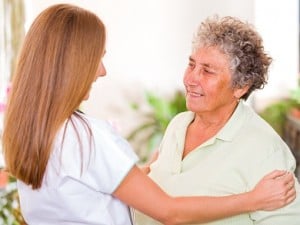
This course covers factors that put patients at risk, including age, medications, and psychological status. It also addresses healthcare provider errors like incorrect medication dosage and environmental dangers such as wet floors. Additionally, the course provides information on ergonomics and body mechanics to ensure nurses are protected from injuries during patient transfers and movements.
1. Falls and falls prevention: Environmental and patient-related risk factors, falls risk screening tools, and preventive measures
2. Reporting incidents and accidents
3. Healthcare provider errors and mistakes: Medication errors, wrong-site surgery, inaccurate patient identification, sharps injuries, and inadequate patient monitoring
4. Sentinel events, root cause analysis, and corrective/preventive actions
5. Body mechanics: Purpose, correct bodily alignment, the line of gravity, the center of gravity, and the base of support
6. Basic safety precautions: Patient identification, preventing distractions, and other measures
7. JCAHO, OSHA, and CDC safety standards
8. National Patient Safety Goals for acute and long-term care
9. Safety hazards along the lifespan
10. A restraint-free environment: Alternatives to the use of restraints
11. The correct application of multiple types of restraints and the monitoring of the patient who is restrained
12. Psychological crises and suicide risk
13. Environmental hazards: Wet floors, oxygen and other medical gases, poor lighting, radiation, latex, accidental poisonings, suffocation, patient elopement, infant abduction, and mercury
14. Preventing and managing internal disasters: Fire, smoke, bomb threats, workplace violence, utility failures, communication breakdowns, terrorism, and bioterrorism
15. Managing external disasters: Terrorism, bioterrorism, earthquakes, cyclones, hurricanes, airplane, and other major transportation accidents
16. Body mechanics techniques and practices
17. Applying the nursing process to the safety of the patients, visitors, staff members, and oneself
LPNs can earn their ADN or BSN degree online in half the time and cost of traditional programs. With no waiting list, free books, and low-cost financing options, this program is ideal for LPNs, LVNs, and Paramedics looking to earn an Associates Degree in Nursing and an RN license. The accelerated, instructor-led test-out program allows learning at a faster pace, with credit transfer options to ACEN accredited nursing schools or numerous universities nationwide.
Infection Control and Prevention
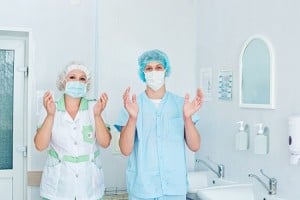 Healthcare-associated infections are a significant and expensive problem affecting almost all patients in healthcare settings. This course covers the chain of infection, microbiology, infection-related risk factors, signs and symptoms, standard precautions, isolation precautions, asepsis, cleaning, disinfection, sterilization, and biohazardous waste management.
Healthcare-associated infections are a significant and expensive problem affecting almost all patients in healthcare settings. This course covers the chain of infection, microbiology, infection-related risk factors, signs and symptoms, standard precautions, isolation precautions, asepsis, cleaning, disinfection, sterilization, and biohazardous waste management.
1. In the chain of infection, sequence: The reservoir, the infectious agent, the portal of exit, the host, the portal of entry, and the mode of transmission
2. Microbiology categories: Bacteria, viruses, parasites, fungi, and protozoa
3. Patient-associated risk factors linked to infections
4. Treatment-related risk factors related to infections like urinary catheters and intravenous fluid lines
5. Local and systemic signs and symptoms of inflammation and infection
6. Types of immunity: Active, passive, natural, and artificial
7. Standard precautions, personal protective equipment, and handwashing
8. Isolation procedures for special modes of transmission: Contact, airborne, and droplet contact precautions
9. Purpose and procedures of medical asepsis
10. Purpose and procedures of surgical asepsis
11. Cleaning techniques and purpose
12. Disinfection techniques and purpose
13. Sterilization techniques and purpose
14. Managing and disposing of biohazard wastes, including sharps
15. Applying the nursing process to infection and infection control
Medication Administration
LPNs are trained to administer medications accurately to patients of all ages. This course covers basic mathematics, measurement systems, dosage calculations, medication classifications, routes of administration, side effects, contraindications, adverse effects, medication orders, the “six rights of medication administration,” and considerations for pediatric and elderly clients.
1. Routes of medication administration and age-related modifications of routes and forms for the pediatric and elderly populations
2. Measurement systems: The metric, apothecary, and household measurement systems
3. Applying the nursing process to medications and medication administration
4. Age-specific considerations for the pediatric and elderly populations such as dosage and contraindications
5. The calculation of dosages: The ratio/proportion and dimensional analysis methods of calculation
6. Commonly occurring contraindications, side effects, and adverse effects, including life-threatening anaphylaxis
7. Complete and acceptable physician medication orders
8. The “Six Rights of Medication Administration”: The right patient, the right medication, the right dosage, the right time, the right route, and the right documentation
9. Medication classifications and the indications for each
10. Types of medication orders
11. Mathematics review: Fractions, mixed numbers, decimals, percents, ratios, and proportion
Basic Patient Needs: Comfort and Rest
This course provides information on pain, pain management, the sleep cycle, and promoting sleep and rest for patients under the care of a licensed practical nurse.
Topics include:
1. Pain assessment scales for adults, infants, and children
2. Behavioral indications of pain
3. Applying the nursing process to the patient’s need for comfort, sleep, and rest
4. Factors that negatively impact on sleep and rest
5. Pain management: Invasive and noninvasive pain management
6. Pain: The “Fifth Vital Sign”
7. Types of pain
8. Pain management medications and alternative techniques
9. Strategies to enhance sleep and rest
10. Factors that impact on the pain experience
11. Sleep and the sleep cycle
Basic Patient Needs: Hygiene
Licensed practical nurses collaborate with the healthcare team to provide basic nursing care, including bathing, skin care, oral care, hand, foot and nail care, perineal care, hair care, shaving, and cleaning the eyes, ears, and nose. Environmental hygiene measures such as cleanliness of the patient care environment and bed making are also included.
Topics include:
1. Beds: Medical asepsis, types of beds, and procedures for each
2. Shaving: Males and females
3. Bathing: Therapeutic and nontherapeutic baths
4. Oral care: Dentures and natural teeth
5. Applying the nursing process to the patient’s hygiene needs
6. Perineal care: Males, females, and care of an indwelling urinary catheter
7. Skin care: Assessment, cleansing, and back rubs
8. Special procedures for cleansing the eyes, ears, and nose
9. Showering
10. Hand, foot, and nail care in addition to the needs of the diabetic patient
11. Environmental hygiene: Cleanliness of the environment and patient care equipment
12. The procedures for complete and partial bed baths
Basic Patient Needs: Mobility
Many patients deal with acute or chronic health issues affecting their ability to move and function independently. In this class, LPN students will learn about the risks associated with immobility, proper patient positioning, alignment techniques, the use of positioning aids, safe patient transfers, performing and assisting with joint range of motion exercises, and employing assistive devices to enhance patient mobility, ambulation, and independence.
1. The impact of immobility on the patient’s musculoskeletal, respiratory, circulatory, urinary, metabolic, integumentary, and gastrointestinal systems
2. Levels of activity: Complete bed rest, bed rest with commode privileges, bed rest with bathroom privileges, out of bed to the chair, and independent out-of-bed activity
3. Patient alignment and positions: Fowler’s, supine, prone, lateral, Sims’, orthopneic, Trendelenburg, and genupectoral positions
4. Uses and types of positioning devices
5. Bed transfers for patients, moving from bed to chair, and chair to bed
6. Mechanical lifts
7. Prevention of shearing and friction
8. Joint movements and terminology related to joints
9. Exercises for range of motion: Active, passive, and active-assist
10. Equipment for continuous passive motion
11. Ambulation assistive devices and their applications
12. Application of the nursing process to address the mobility needs of patients
Basic Patient Needs: Fluids and Electrolytes
In this course, student nurses will explore the crucial role of fluids and electrolytes, electrically charged particles vital for normal bodily functions. Content includes understanding fluid compartments, factors affecting patient intake and output, movement of fluids and electrolytes between compartments, electrolytes (cations and anions), causes, treatments, signs, and symptoms of electrolyte imbalances, and the acid-base balance.
1. Factors that impact on the intake and output of the patient
2. Movement of fluids and electrolytes between the fluid compartments: Active transport and passive transport (diffusion, osmosis, and filtration)
3. Electrolytes: The cations and the anions
4. The causes, treatments, and signs and symptoms of electrolyte excesses and deficits
5. Fluid compartments: Intracellular and extracellular fluid compartments
6. The Acid-base balance
7. Acid-base imbalances, their causes and their treatments: Respiratory acidosis, respiratory alkalosis, metabolic acidosis, and metabolic alkalosis
8. Applying the nursing process to the fluid and electrolyte needs of the patient
Adult Medical Surgical Nursing
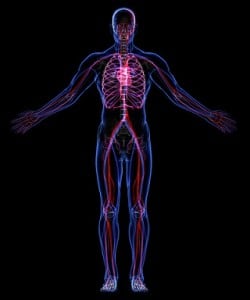 A majority of LPNs and RNs provide care to adult patients with medical/surgical health problems. This course, presented in detail by LPN instructors, covers system disorders and diseases for various body systems, including etiology, risk factors, signs and symptoms, diagnosis, and treatment.
A majority of LPNs and RNs provide care to adult patients with medical/surgical health problems. This course, presented in detail by LPN instructors, covers system disorders and diseases for various body systems, including etiology, risk factors, signs and symptoms, diagnosis, and treatment.
1. Endocrine system
2. Cardiovascular system
3. Gastrointestinal system
4. Sensory system
5. Reproductive system
6. Immune system
7. Blood and lymphatic system
8. Applying the nursing process to the care of the adult with a medical/surgical disorder or disease
9. Genitourinary system
10. Respiratory system
11. Neurological system
12. Musculoskeletal system
13. Integumentary system
Emergency Nursing Care
LPNs, alongside other healthcare team members, must be equipped to perform emergency nursing care within and outside emergency departments and intensive care units. This course covers skills such as assessing and caring for patients during cardiopulmonary arrest, shock, hemorrhage, trauma, aspiration, burns, accidental poisonings, substance use emergencies, musculoskeletal injuries, acts of terrorism, and bioterrorism.
Topics include:
1. Performing the ABCs of cardiopulmonary resuscitation for neonates, infants, children, and adults during cardiopulmonary arrest
2. Obtaining help for and calling during an emergency medical crisis
3. Cardiogenic shock, neurogenic shock, hypovolemic shock, septic shock, psychogenic shock, and anaphylactic shock: Assessment and treatment of shock
4. Assessment and treatment of arterial bleeding, venous bleeding, capillary bleeding, and external bleeding in cases of hemorrhage
5. Priorities of care and treatment for trauma patients
6. Open wounds and closed wounds: Types of traumatic wounds
7. Populations at risk for aspiration of foreign bodies in the throat, ears, and nose: Aspiration of foreign bodies
8. Treatment of complete and partial airway obstructions for conscious and unconscious patients in infants, children, and adults
9. Heat, cold, and chemical burns: Assessment and treatment of burns
10. Shallow, partial thickness, deep, partial thickness, and full thickness burns, and the Rule of Nines: Assessment and treatment of burns
11. Populations at risk, inhaled, ingested, injected, and absorbed poisons: Accidental poisonings
12. Treatment of accidental poisonings and the role of Poison Control Centers
13. Signs, symptoms, and treatments for various substance abuse emergencies
14. Compound, closed, greenstick, comminuted, spiral, impacted, compressed, and depressed fractures: Types of skeletal fractures and their treatments
15. Assessment and care of dislocations
16. Assessment and care of spinal cord injuries
17. Pathogens, nuclear explosion, blasts, and chemicals: Agents of terrorism and/or bioterrorism
18. Treatment of adverse effects of terrorism and bioterrorism according to the agent
19. Applying the nursing process to the management of all kinds of emergencies
Perioperative Nursing
LPNs play a crucial role in caring for patients undergoing surgical and invasive procedures. This course covers factors impacting the surgical process, the preoperative, intraoperative, and postoperative phases, and the role of the perioperative nurse.
Topics include1. Sterile asepsis and sterile techniques
2. Assessments, patient/family teaching, informed consent, laboratory and other diagnostic testing, respiratory coughing, deep breathing, and splinting exercises: The preoperative phase of the perioperative process
3. Applying the nursing process to the care of patients during the perioperative process
4. Patient identification and the prevention of wrong patient and wrong site surgery
5. The intraoperative phase of the perioperative process: Patient positioning, the role and responsibilities of the scrub nurse and the circulating nurse
6. The role and responsibilities of the nurse during the immediate and later postoperative stages: The postoperative phase of the perioperative process
7. Age, illness, nutritional status, psychological status, socioeconomic status, and medications that are taken by the patient: Factors that impact on the surgical process
8. General, regional, local, and conscious sedation: Anesthesia
9. Completing a thorough and accurate preoperative checklist
10. Pain and pain management
11. Handling of sharps in the operating room using a “neutral zone”
12. Caring for the incisional site
LPN to RN Bridge Programs: Accelerating Career Growth for Practical Nurses
Psychiatric and Mental Health Nursing
This course explores the inter-connectedness of mental and physical health. LPN students will learn about stress, anxiety, adaptation, coping, psychological defense mechanisms, and various psychiatric/mental health disorders to effectively care for patients with diverse mental health needs.
Topics include:
1. The signs, symptoms, and treatments for depression, bipolar, and cyclothymic disorders: Mood disorders
2. Coping: Adaptive and maladaptive coping
3. The signs, symptoms, and treatments for paranoid, borderline, antisocial, abusive, and dependent personality disorders: Personality disorders
4. The stages and characteristics of addiction and dependence
5. The signs, symptoms, and treatments for anorexia and bulimia nervosa: Eating disorders
6. Types of psychiatric/mental health disorders: Organic disorders, eating disorders, anxiety disorders, personality disorders, mood disorders, psychogenic disorders, and thought process disorders
7. Psychological defense mechanisms, their purpose, signs, and symptoms
8. The signs, symptoms, and treatments for psychosomatic and somatoform disorders: Psychogenic disorders
9. Stress and anxiety, its effects on mental functioning and stress management techniques
10. The signs, symptoms, and treatments for illicit drug and alcohol abuse/addiction: Addictive disorders
11. Therapeutic relationships, a therapeutic milieu, psychotherapy, cognitive/behavioral therapy, electroconvulsive therapy, and medications: Psychiatric/mental health interventions
12. The signs, symptoms, and treatments for phobias, obsessive-compulsive, and posttraumatic stress disorders: Anxiety disorders
13. Applying the nursing process to the psychiatric and mental health needs of patients
14. The signs, symptoms, and treatments for delirium and dementia: Organic mental disorders
15. Psychotropic medications, indications, side effects, and nursing implications
Grief, Loss, and the End of Life
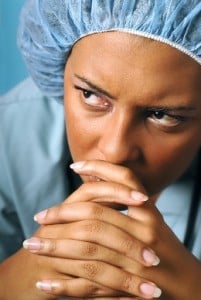 Patients and their families undergo sorrow and loss due to various circumstances, such as the loss of independence, changes in the body like losing a breast or leg, and when facing a life-changing or terminal illness.
Patients and their families undergo sorrow and loss due to various circumstances, such as the loss of independence, changes in the body like losing a breast or leg, and when facing a life-changing or terminal illness.
The needs of these individuals affected by grief and loss, as well as those experiencing the end-of-life process, encompass physical, psychological, social, cultural, and spiritual aspects. This course aims to explore these experiences and the nurse’s role, along with the essential knowledge, skills, and abilities integral to hospice care.
Topics covered include:
1. Loss: Definition and types of loss
2. Palliative care measures and interventions
3. Grief: Definition and types of grief
4. Incorporating the social, cultural, and spiritual aspects of care and support to the patient and significant others at the end of life
5. Theories of grief and loss: Kubler-Ross, Bowlby, Worden, and others
6. The legal and ethical issues relating to the end of life: Advance directives, do not resuscitate (DNR) orders, healthcare surrogacy and proxy, euthanasia, physician-assisted suicide, organ donations, pain relief even if it hastens death, and patient rights at the end of life
7. Managing the psychological needs of the patient and significant others at the end of life
8. Factors that impact on the patient’s grief and loss experiences
9. Hospice care: Curative vs. palliative care, hospice settings, the members of the hospice team, and the goals of hospice care
10. Applying the nursing process to loss, grief, hospice care, and the perideath process
11. Addressing the physical needs of the patient and significant others at the end of life
12. Post-mortem care
Rehabilitation and Restorative Care Nursing
Licensed practical nurses play crucial roles in various settings, providing care in acute care hospitals, subacute care centers, long-term care facilities, home care, and collaborating with other healthcare professionals in rehabilitation and restorative care.
This course equips student nurses with knowledge, skills, and abilities related to rehabilitation/restorative care, covering:
1. The roles and responsibilities of the members of the rehabilitation and restorative care teams
2. Pediatric, adult, gerontological, and mental health rehabilitation/restorative care
3. The definitions of and the differences between rehabilitation and restorative care
4. Applying the nursing process to the needs of the patient in need of restorative and rehabilitation nursing services
5. The indications for and the goals of rehabilitation and restorative nursing care
6. Disabling disorders: Spinal cord injuries, traumatic brain injury, cerebrovascular accidents, post-traumatic stress disorder, and polytrauma
Maternal and Neonatal Nursing
For licensed practical nursing graduates interested in obstetrics and delivery, this course provides foundational knowledge for working in these areas. The content includes:
1. The complications of pregnancy, signs, symptoms, and treatment: Ectopic pregnancy, spontaneous abortion, molar pregnancy, incompetent cervix, hyperemesis gravidarum, abruptio placentae, placenta previa, gestational hypertension, gestational diabetes, disseminated intravascular coagulation, HELLP syndrome, TORCH, thrombophlebitis, multiple gestations, hemorrhage, and age-related complications
2. Applying the nursing process to the antepartal period of time
3. The anatomy and physiology of pregnancy: Fertilization, implantation, and fetal development
4. Neonatal complications, signs, symptoms, and treatment: Preterm and post-term neonates, hemolytic disorders, small and large for gestational age, and Rh incompatibility
5. The stages of labor and the components of each
6. The onset of labor, signs of impending labor, and differentiating between false and true labor
7. Applying the nursing process to the labor and delivery process
8. The mechanisms of labor
9. Fetal status and assessments during labor
10. Fetal heart assessments and interventions: Tachycardia, bradycardia, variability, and decelerations
11. Medications and analgesia used during labor
12. The pregnancy and childbirth plan: Obstetricians, midwives, birthing settings, and childbirth preparation classes
13. The processes of labor: The passenger, the passage, the powers, the maternal psyche, and the maternal position
14. The presumptive, probable, and positive signs of pregnancy and the estimated date of delivery
15. Applying the nursing process to the care of the neonate and mother during the postpartum period of time
16. Embryonic development: The fetal membranes, amniotic fluid, the placenta, the umbilical cord
17. Fetal growth and development during the first, second, and third trimesters of pregnancy and gestation
18. Fetal assessment: The fetal heart, the use of ultrasonography, fundal height, chorionic villus sampling, maternal serum alpha-fetoprotein, amniocentesis, stress testing, and the biophysical profile
19. Maternal anatomical and physiological changes during pregnancy
The course aims to prepare students for roles in labor and delivery nursing.
Pediatric Nursing
In licensed practical nursing (LPN) programs, students often find an interest in working with pediatric patients. LPN schools prepare students to handle patients of all ages, and this course specifically focuses on the unique needs of pediatric patients, ranging from newborns to adolescents. The course covers various aspects, including:
1. Safety needs and the prevention of accidents among the pediatric population
2. Health promotion interventions for the pediatric population according to their age and developmental status
3. Age related fears and the concept of death
4. Applying the nursing process to the care of the pediatric client
5. The diagnosis, signs, symptoms, and treatment of commonly occurring pediatric diseases and disorders: Communicable diseases and those affecting the integumentary, musculoskeletal, gastrointestinal, blood and lymphatic, cardiovascular, respiratory, genitourinary, endocrine, reproductive, sensory, neurological, and immune systems
6. The administration of medications to the pediatric client and modifications of the dosage, route, and intramuscular sites for the infant, toddler, preschool child, school-age child, and adolescent
7. Factors and conditions that affect growth and development among pediatric patients
8. Age related needs and communication with the infant, toddler, preschool child, school-age child, and adolescent during hospitalization and when receiving healthcare services
9. The physical assessment of the pediatric patient from the neonate to the adolescent: Physical growth, vital signs, and changes in the findings of the head-to-toe physical assessment
10. Nutritional needs of the pediatric patient
11. Age specific pain assessment and pain management
12. Family-centered care and the care of the pediatric patient
Gerontology Nursing
Gerontology nursing involves caring for the elderly population, considering their specific characteristics and healthcare needs. Licensed practical nurses play a vital role in various settings where elderly patients receive care. This course focuses on preparing nurses to meet the unique needs of older patients, covering:
1. America’s “graying” phenomenon
2. Care settings: The home, acute care, assisted living, long-term care facilities, and adult day care centers
3. The aging process’s normal changes: The integumentary, musculoskeletal, gastrointestinal, blood and lymphatic, cardiovascular, respiratory, genitourinary, endocrine, reproductive, sensory, neurological, and immune systems
4. Psychosocial requirements: Stressors, depression, lower socioeconomic status, loss, grief, and the end of life
5. Needs for safety and security: Falls, elder abuse, neglect, and other accidents
6. Considerations for medication administration in the elderly population and polypharmacy
7. Application of the nursing process to the care of gerontological patients
8. The aging process: Debunking myths about aging, theories related to aging, interventions for health promotion and wellness in the aging population
Intravenous Medications
The regulations for licensed practical nurses handling intravenous (IV) therapy vary across states. Some states allow LPNs to initiate and maintain IV lines and administer medications, while others do not. This course equips learners with the knowledge, skills, and abilities needed for venipuncture and the administration of fluids, electrolytes, nutrition, blood products, and medications via the IV route. Topics covered include:
1. Intravenous catheters: The characteristics, uses, and nursing implications for peripheral, midline peripheral, peripherally inserted central, and central venous catheters
2. Drop factors and calculating intravenous flow rates
3. Applying the nursing process to intravenous therapy and the administration of blood and blood products
4. The complications of intravenous therapy: The prevention of, signs, symptoms, and treatment for Infection, infiltration, extravasation, phlebitis, occlusions, embolus, and hypersensitivity to intravenous medications
5. The types of intravenous solutions and their indications: Hypertonic, isotonic, and hypotonic
6. The administration of blood and blood products
7. Basic intravenous therapy terms and terminology: Intravenous therapy, peripheral IV therapy, central line IV therapy, isotonic, hypertonic, hypotonic, and osmolarity
8. Modifying intravenous therapy for the pediatric and elderly populations
9. Using a volumetric intravenous controller and a mini infuser syringe pump
10. Intravenous tubings: Primary tubing, secondary IV tubing, and piggybacks
11. The advantages and disadvantages of intravenous therapy
12. Review of the anatomy and physiology of the veins
13. Performing venipuncture and inserting an intravenous catheter
14. Applying the principles of safety and infection control to intravenous therapy

Dont wait until the last minute.
Provide your requirements and let our native nursing writers deliver your assignments ASAP.
